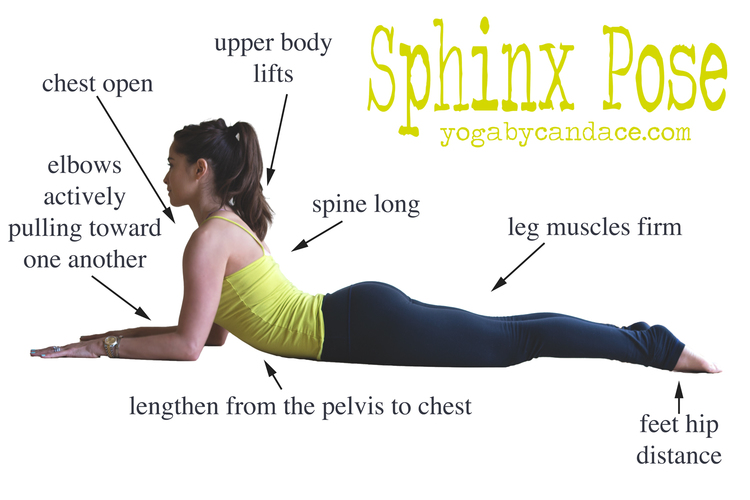First, a disclaimer: I know that some teaching styles, have a person holding these poses for many minutes, with lots of props:
Sphinx to Cobra
Lets apply this. Start lying on the abdomen:

hands are:

Why teach cobras?
It is really important to know what and why you are teaching a pose in a particular class. Why would you be teaching a cobra, or versions of cobras?
How can I make a cobra more restorative?
Whatever sphinx or cobra posture is able to be held, is excellent. The trick is to take a person's mind away from the discomfort, by:
1) giving an awareness to focus on:
Where would I put a restorative cobra, in a class?
- In one style, it is for being able to do more advanced poses with precision (Iyengar)
- In another style (Yin), it's for relaxing as a yoga style
What I am showing today, is more for being able to hold an easier pose, whilst others hold a more difficult version. It is a learned skill to be able to give instruction in both, simultaneously, and I wish that more new yoga teachers knew that it takes experience. It would take away a lot of teaching stress.
How to teach beginners to advanced
How to teach beginners to advanced
What can you do, as a teacher, in the meantime? I learnt how to do it, some years ago. I had heard people criticising a yoga teacher for giving too many variations, according to ability, prior to people actually doing a version of the pose. I know, and this was the critique, that the method that she was using, was wrecking the flow of her class.
Then, soon after, I went to an older yoga teachers class. I was going to be fulling in for her, and from her teaching style, I learnt how to present different levels of pose. It was so easy:
- the class does a pose 3 times
- the first time is the beginner version
- the 2nd time is the next level
- and the 3rd time is a harder version
- the class is encouraged to stay with the version that suits them best
Sphinx to Cobra
Lets apply this. Start lying on the abdomen:
1) Sphinx 1: lift up head and shoulders, place elbows on the floor, and cup your jaw with your hands. The elbows can be very wide apart, through to being together. This is very easy to hold at any level.
2) Sphinx 2: elbows under shoulders, forearms flat on the floor. You can look slightly down, upwards, or straight ahead. Below are some complicated explanations. Easier is:
2) Sphinx 2: elbows under shoulders, forearms flat on the floor. You can look slightly down, upwards, or straight ahead. Below are some complicated explanations. Easier is:
- push forearms into floor
- bad back: drop tailbone
- ok back: push hips forwards
- push tops of feet into the floor

Cobra:
hands are:
- shoulder width apart, forward of head for backs which have problems or are not bendy
- same, alongside the head
- under the shoulders
To be honest, you could just do cobra only, without sphinx, using each of these hand positions as beginner through to harder. Do once for each version, with people staying at the level which is best for them.
elbows:
elbows:
- can be bent
- or straight
Once again, here are some full-on instructions

Easier is:
- hands pushed into floor
- tailbone or hip instructions, plus feet, do them as for easier sphinx instructions
Why teach cobras?
It is really important to know what and why you are teaching a pose in a particular class. Why would you be teaching a cobra, or versions of cobras?
- as your backbends: a number of cobras, from sphinx 1 as a series of backward bends. This is perfectly feasible.
- you have noticed that some of the class are getting a bit "stoopy". A cobra, in this case, would be for strengthening the back. In this case, I would be encouraging people to draw their shoulder blades in towards each other, and down. This will create stress on the back muscles.
How can I make a cobra more restorative?
Whatever sphinx or cobra posture is able to be held, is excellent. The trick is to take a person's mind away from the discomfort, by:
1) giving an awareness to focus on:
- the breath
- or physical "tweeks" as in the above photos (this is the harder version)
- or a dristhi, or, to put it more simply, a point to gaze at. I find that nosetip gazing is excellent here.
2) make it physically more comfortable whilst holding it:
- other than the sphinx poses above, you can put a small cushion on the floor, just above the top of the hip bone.
- cushions can also go under the bent elbows, for arm support.
- feet can be hip width or more apart, rather than having legs touching. This also makes it easier to hold.
Where would I put a restorative cobra, in a class?
- if you are doing strong standing poses, or sun salutes, do all of these first
- then the restorative poses
- for restorative poses, do the backbends on the abdomen, one after the other, starting with the easiest ones
- do twists and forward bends after the backbends.
You might say that restorative poses must be held for a long time. I disagree. Any posture that we can hold for 5 breaths or more, can be restorative. The trick is in knowing how to teach it.
Comments
Post a Comment
You can leave comments here - comments are moderated for the time being.